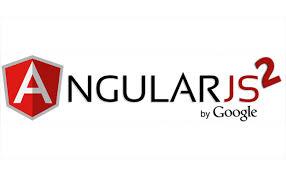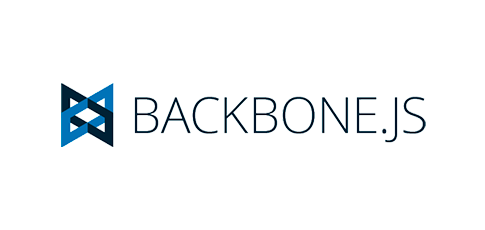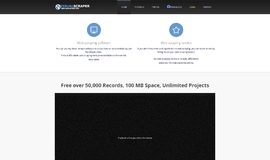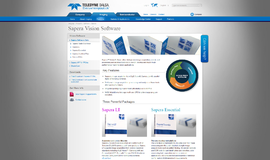5 JavaScript Frameworks to learn in 2017
These days, there is a seemingly endless amount of frameworks available for different programming languages. Some of the most common and popular JavaScript frameworks include Angular JS, Node JS, Meteor JS, Polymer JS, React, Aurelia, Vue.js, Backbone, Ember, JQuery, Underscore & Lodash, D3.js, Babylon.js, Three.js, and the list goes on. But before we continue less ask the question, what is a framework?
A framework is an abstraction that describes application structure, indicating what kind of program can or should be built. It gives developers a systematic way to organize their code which makes creating their program easy and more flexible. It decreases the effort needed to build an application. Frameworks are different from libraries. Libraries are like and entire toolkit which highly abstracts different layers. Framework focuses on “how” you should present your code, like a code template, along with some helper classes and constructors to “order” application architecture or to solve any specific problem.
JavaScript Frameworks to learn in 2017
JavaScript is most widely and commonly used programming language in the world. It is language of the web, and with its different frameworks is used to build iOS and Android applications on both the server and client side. Due to its abundant use JavaScript is known as the Future of Programming Language. Its demand is increasing every day so I compiled here a few JavaScript frameworks you must learn in 2017.
Angular 2 is used for building complex web applications in the browser. Angular 2 JS is the latest version of Google’s hugely popular MV* framework. It is an open source JS framework. It has many essential features such as mobile gestures, animations, filtering, routing, data binding, security, internationalization and beautiful UI components. Many people think Angular 2 is an upgrade of Angular 1 but this is not the case--it is completely rewritten. It is modular, lightweight and easy to learn. Its latest version 2.3 is freely available. Angular 2 is simpler than Angular 1 and its fewer concepts make it easier to understand. To build a complicated front-end web or mobile application, Angular 2 provides everything you need from powerful templates to fast rendering, data management, HTTP services, form handling, and so much more. Google is going to release Angular 3 in next few month surely which will be much more advance than you think.
Features of Angular 2 JS
- AtScript: Angular 2 uses TypeScript’s type syntax to generate runtime type assertion.
- Component Based: Controllers and $scope are no longer part of Angular 2. $Scope was removed to favor ES6 classes. They have been replaced by components and directives. That’s why Angular is entirely component based. It makes it easier.
- Simpler: Angular 2 is simpler to reason and easy to learn.
- Transparent: Angular 2 is more transparent as it uses zones mechanism to make a lot of reasoning about the digest cycle.
- Animations: Better animation support than Angular 1.
- TypeScript: Angular 2 is entirely based on TypeScript.
- Mobile Applications: Angular 2 is not only for web, it also focuses on iOS and Android Applications.
- Dependency Injection: One of the core feature of Angular 1 was dependency injection. Dependency Injection makes it easy to follow the “divide and conquer” approach to software development. It was a unique feature in Angular 1 but its implementation was plagued with problems. Angular 2 address these issues, as well as adding missing features such as child injectors and lifetime/scope control.
- Dynamic Loading: This feature was missing is Angular 1. We have to face hurdles while importing new directives in the project. But all these problems are gone now in Angular 2. It automatically syncs when you go to compile.
Uses of Angular 2 JS
- Google AdWords, the largest advertising system at Google.
- There are many internal Angular 2 apps at Google.
React is an open source JS library supporting both front-end and server-side web development, and is used for building user interfaces and web applications. It was initially release by Facebook, Instagram and community on March 2013. React Native is just a consequent of react. It is a platform used to build native apps using JS. React was invented so JavaScript can manipulate website DOM faster using the virtual DOM model. One of its unique features is that it is not only for client side but it also can be rendered server-side and they can work together in an interoperable fashion. React came into existence when Facebook needed to find a way to reduce their application re-build time (which in some cases was as high as 40 min) to something more reasonable. The precise definition of React is “JavaScript-based UI rendering engine”.
Features of React JS
- JSX: JSX is XML-like syntax, React uses JSX to define a component’s DOM representations. The reason to use JSX is it makes code more readable, easy to understand and easy to write. It feels like writing in HTML.
- One way data flow: React is designed in such a way that it will only support data flow in one direction. If you want two-way data flow, you will need additional features.
- Light weight: Due to the lightweight implementation of even system and DOM it certainly delivers fast and effective performance.
- Component Based: Build encapsulated components that manage their own state, then composes them to make complex UIs.
- Optimization: With React JS you can optimize your code that will increase performance and will save time.
- Virtual DOM: Another important and beneficial feature of React is the use of the Virtual DOM. It creates an in-memory data structure and then updates the browser’s displayed DOM efficiently.
Uses of React JS
- Facebook’s codebase includes over 20,000 components. React is being heavily used not only on the Facebook site, but the web versions of Instagram and WhatsApp are all built completely in React.
- Facebook is using React for graph search UI, page insights UI (data visualization), parts of mobile app (upload, navigation), all of instagram.com and for new development.
- React Native is used to build real mobile apps that are indistinguishable from an app built using Objective-C or Java. React Native uses the same fundamental UI building blocks as regular iOS and Android apps.
Aurelia JS
Aurelia is a JavaScript client side framework that it is used to create next generation applications. It is most powerful and flexible JS framework in the world as it allows us to focus on business logic not on the framework. It is quite similar to Angular 2 JS. Aurelia offers ES6-support out of the box and supports all forms of alternative abstraction syntax like TypeScript and CoffeScript. Aurelia components can be easily written as web components which can then be exported to other web applications, regardless of whether they are written in Aurelia or not. This makes Aurelia a next generation framework and definitely worth learning. Aurelia enables you to not only create amazing applications, but also enjoy the process. With Aurelia you can not only create amazing UI but also do so in a way that is maintainable, testable and extensible. It is designed with simple conventions and according to web standards so it saves your time from different complex configurations.
Features of Aurelia JS
- Extensible HTML: Aurelia offers an amazing feature of Extensible HTML. With Extensible HTML you can create custom HTML elements, add custom attributes to existing elements and much more, like data binding and high performance batched rendering.
- Environment: With no external dependencies, it targets mobile, desktop and the browser’s environment.
- Architecture: Aurelia takes a modern approach to architecture. It is built as a series of collaborating libraries. In the past frameworks have been monolithic but Aurelia is not like that. It is composed of smaller and focused modules.
- Multiple Programming Language Support: Aurelia’s API’s were designed to supports both today’s and tomorrow’s most popular web programming languages. It uses ES5, ES 2015, ES 2016 and typescript.
- Web Standards: Aurelia is completely built on web standards. This makes it one of the coolest framework.
- Template Controller: It creates new mechanisms for rendering templated UI. Template controller is a class that can dynamically create UI and inject it into the DOM.
- Two way Data Binding: Aurelia offers powerful two way binding to any object.
Uses of Aurelia JS
- It is used to develop hybrid mobile apps.
- Aurelia is the future of rich web applications.
Vue.js
Vue.js is one of the newest and most popular open source front-end frameworks. Its first release was on February 2014 and the latest version is 2.1.4. It is growing quickly with community support. It is a framework for building user interfaces. Vue.js provides data-reactive components with simple and flexible API. It is perfectly capable of powering sophisticated single page applications when used in combinations of modern tooling and supporting libraries. Vue.js is extremely easy and its source code is readable. The main focus is on the view layer only so it is very easy to pick up and integrate with other libraries or existing projects. It does not offer as much structure as Angular; Vue.js is a library for smaller web applications especially those built on PHP. It requires less overhead as it offers functional components which are stateless and instance less.
Features of Vue.js
- Virtual DOM: Rendering layer is based on lightweight virtual DOM implementation which improves memory consumptions and initial rendering speed.
- Component: To extend basic HTML elements to encapsulate reusable code Vue.js has components. Components are most powerful feature of Vue.js.
- Server-Side Rendering: Vue.js naturally supports server-side rendering with client side hydration.
- Versatile: Minimal core with an incrementally adoptable stack that can handle apps of any scale which make it more versatile.
Uses of Vue.js
- There are a number of top websites developed in Vue.js.
- Build apps with Vue.js
Backbone is an open source, lightweight, front-end JavaScript framework. It was initially released on 13 October 2010, developed by Jeremy Ashkenas who is also known for CoffeeScript and Underscore.js. It provides a RESTful JSON interface. It adds structure to your JavaScript client side code. It is designed for developing single page web applications. It allows us to structure our code in an MVC (Model, View, and Controller) fashion where the model retrieves and populates date in code, and the view is an HTML representation of the model. The controller allows us to save our application state--it transfers the model data to the view. When model changes it automatically updates the HTML of your code. Backbone JS is used to build applications where UI elements regularly changes. It acts like the backbone of your project. Backbone enforces clean JS code--no mixing of JS with HTML. It provides minimal set of data structures (models collections) and user interfaces that are helpful for building dynamic web applications.
Features of Backbone JS
- Organize: Backbone.js organizes code, create clean and efficient code.
- Light: Backbone is extremely light it separates business and user interface logic. Ts size is 7.5 KB.
- MVC: It Offers MVC framework for organizing JS applications.
- RESTful API: Backbone JS ensures that communication to the server is entirely through RESTful API.
- Modular: With Backbone JS, data is represented as a model, which can be created, validated, updated and destroyed.
- Backbone: There are many other frameworks which uses Backbone JS as a backbone, like Rendr, Walmart.
Uses of Backbone JS
- Building complex User Interfaces
- Used to build SEO friendly websites
Conclusion
JavaScript is everywhere. Once relegated to an Internet fad, this malleable programming language has evolved along with the Web and now finds itself entrenched in modern browsers, complex Web applications, mobile development, server-side programming, and in emerging platforms like the Internet of Things. In addition to being the only cross-browser scripting language, it's used as a scripting language in Unity3D, is very popular as a backend language (Node.js), and soon also as a language to control hardware. We have three huge actors (Mozilla, Google and Apple) competing to build the fastest JavaScript interpreter. JavaScript is known as the future programming language. Its importance is increasing day by day as it is central to many of the newest and easiest technology.
Recent Stories
Top DiscoverSDK Experts


Compare Products
Select up to three two products to compare by clicking on the compare icon () of each product.
{{compareToolModel.Error}}






















{{CommentsModel.TotalCount}} Comments
Your Comment